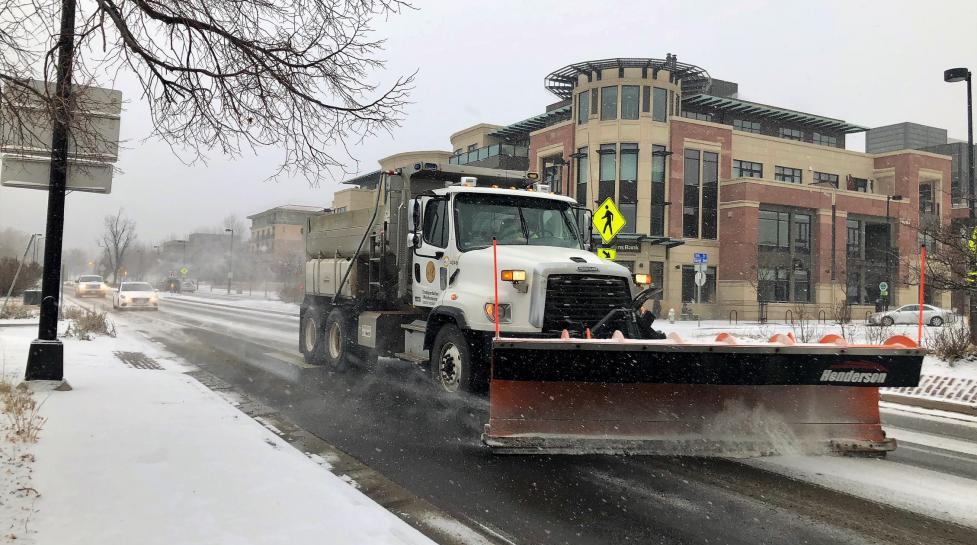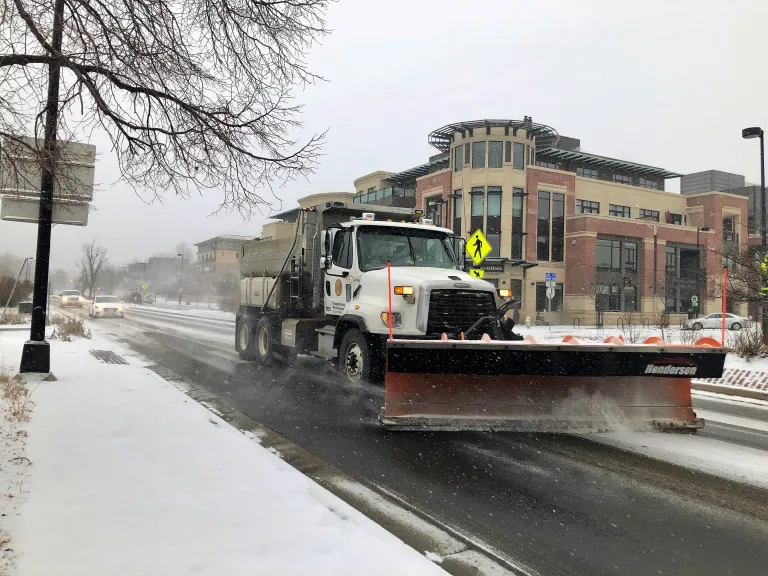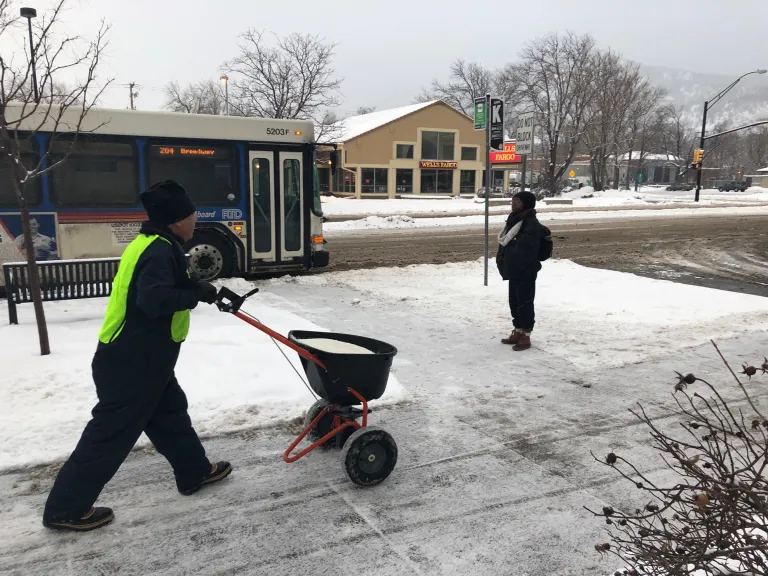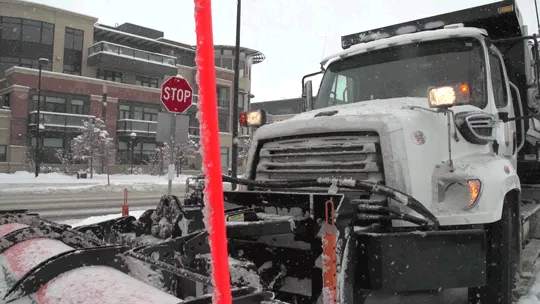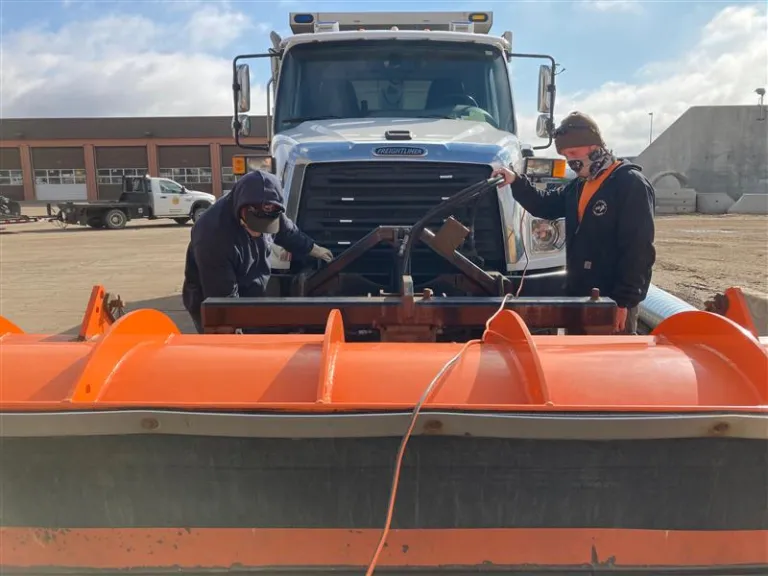Framework centers safety, equity, mobility and customer service for all winter travelers
Media
Winter weather is coming – here’s what to expect and how to prepare
The city begins to get ready for winter well before it snows. Preparations typically include training new team members and ensuring equipment is in working order. This year, the city is also preparing to launch a new approach to how it prioritizes snow and ice response based on a recently completed review of its program.
The storm-size response framework clearly defines which areas will be cleared and the level of service the community can expect based on how much it snows. The framework divides snow and ice response into small (less than three inches), medium (three to eight inches) and large (more than eight inches) amounts of snow accumulation. Boulder typically receives 28 snowfalls annually, with the majority of these bringing less than three inches of snow.
“We heard from over 800 community members during the review and are looking forward to using a new storm-size approach to guide how we respond to snow on streets, multi-use paths and shoveled areas,” said Transportation and Mobility Department Interim Director Valerie Watson. “This new approach allows us to focus on priorities we heard from the community during the review, such as clearing major streets, key pedestrian crossings, multi-use paths and critical bike routes.”
425 miles of city streets and over 70 miles of multi-use paths are regularly cleared by the city and its partners when it snows. During winter storms, the city aims to clear key emergency routes, major streets, the on-street bike network, access to hospitals, schools, transit and critical infrastructure, as well as neighborhood streets with steep slopes and the city’s multi-use path system for walking and bicycling. The goal is to support multimodal travel and accessibility for all people by focusing on safety, equity, mobility and customer service before, during and after it snows.
“Our teams work around the clock to keep the city’s transportation system safe and accessible during winter weather,” said Transportation Maintenance Manager Scott Schlecht. “We ask community members to plan ahead when snow is in the forecast, be aware that typical travel conditions cannot always be maintained and to give our crews plenty of space.”
Winter weather is just around the corner – here’s what to expect and how to prepare:
- People who must travel during winter weather are encouraged to visit the city’s website to view live video of current road conditions at key intersections throughout the city.
- The city does not typically clear side and residential streets since most snow melts within a few days and because it would significantly increase costs, impacting other services.
- City property owners are required to keep sidewalks, curb ramps and curb extensions next to their property clear of snow and ice within 24 hours after snowfall stops.
- Property owners are responsible for disposing of branches and other debris that falls on their property after storms. Learn more about how to clean up after a storm.
- Community members who want to help their neighbors can volunteer for the city’s Shovel-a-Stop Program, to help clear snow and ice from bus stops.
- Cold air can impact a home’s pipes and plumbing. Learn how to winterize your home.
- When it snows, check the city's website and follow the city on X for regular updates.
For more information about how the city responds to snow and ice, visit the city’s website. For more information about winter travel, visit COtrip Traveler Information.
